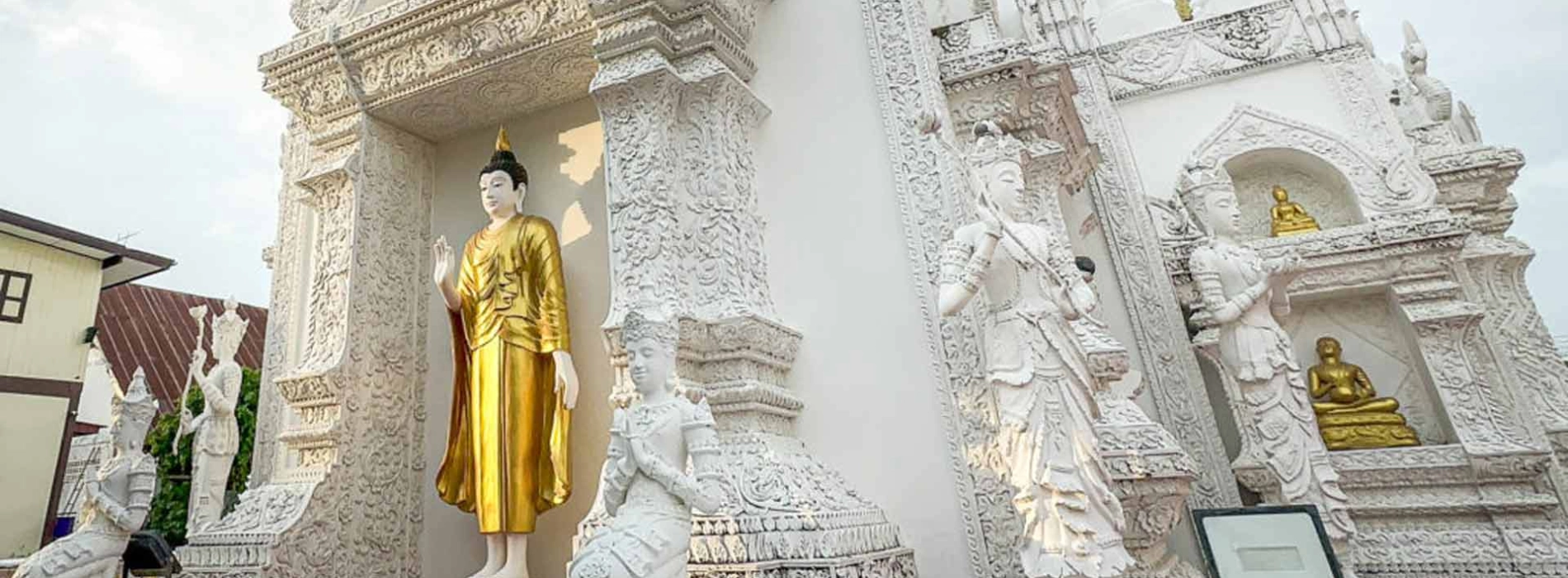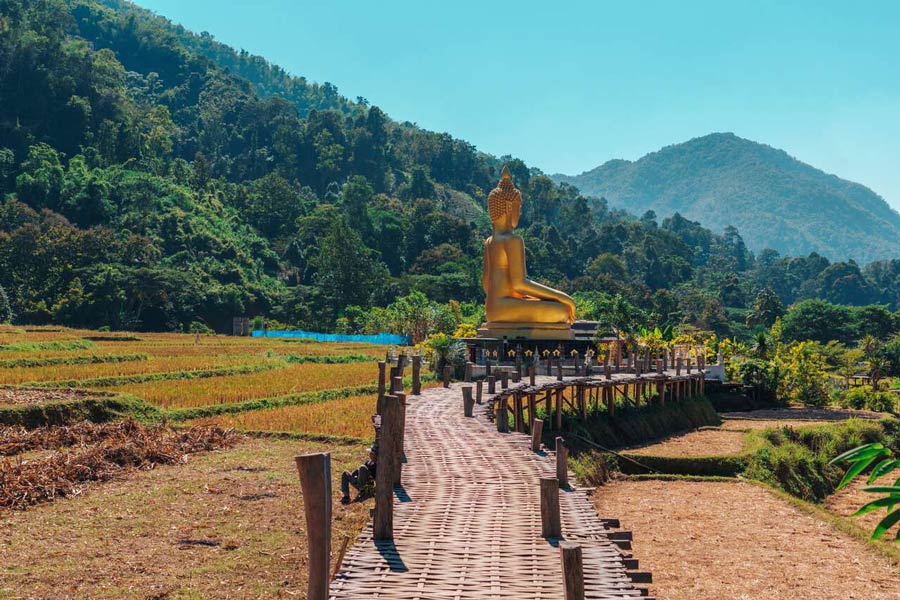Phrae

Known as "The Gate of Lanna East," the province of Phrae offers a wealth of intriguing and historic cultural places for visitors to explore. For a very long time, the annual relics of people born in the Year of the Tiger are housed in Wat Phra That Cho Hae, a valuable sanctuary in Phrae province. Wat Chom Sawan is distinct in that its roof is piled into lovely levels and is made entirely of teak.

Wat Phra That Cho Hae is a very important temple of Phrae.
Phrae is renowned for its moonshine running, blacksmithing, rebelliousness, romantic tragic folktales, teak and malaria-infested woods, and rebelliousness. However, this northern province is also renowned for its great woodworking, ancient homes, gorgeous indigo textiles, gilded pagodas, and burgeoning culinary scene. Roadrunners used to stop at Phrae for petrol and hot noodles before heading back to the highway. It was previously considered a filling station. The little hamlet has now transformed into a craft metropolis with the best natural-dyed textiles, a distinct culture, and outstanding food.
Built during the Sukhothai era was Phrae. Wat Phra That Cho Hae was one of the first temples built in Phrae, dating back to the Sukhothai dynasty in 1336–1338. The village functioned as a Lan Na Kingdom outpost in the fifteenth century.
On April 5, 1889, Piriya Thepwong, the last king of Phrae, succeeded to the throne in place of his father. The Wichai Racha Residence was built in 1891 by the previous Phrae treasurer and served as a safe haven throughout the Ngiao insurrection and World War II. Khum Chao Luang was built in 1892 to serve as the chao luang's royal house. Chinese architects from Guangzhou built a teak home in the color pink as a wedding gift for the stepdaughter of the Phrae monarch in 1897. In the same year, Phraya Chaiboon (Thongyuu Suwanbat) was named governor of Bangkok in accordance with the centralization measures of Chulalongkorn.
The climate in Phrae is tropical savanna. It's comfortable and dry throughout the winter. The warmest month of the year, April, sees a rise in temperature with occasional highs over 40°C. The monsoon season, which spans from May to October, is characterized by frequent downpours, chilly daytime temperatures, and mild evenings. August and September are when it rains the most. November through April are the ideal months to visit Phrae.
 Walk the bamboo bridge at Wat Na Khu Ha
Walk the bamboo bridge at Wat Na Khu Ha
Let's discover Phrae, a treasure tucked away in Northern Thailand's verdant surroundings. While Phrae might not be the first option of a typical Thai tour guide, its blue seascapes and well-filled buildings are helping to make it increasingly popular, especially with the return of traditional crafts. With much respect, Asia King Travel invites you to go out on an expedition to discover the colorful and alluring Phrae. Allow us to take you to this amazing location so you can explore its abundant natural beauty and rich cultural heritage.
See more: Chiang Mai's Attractions